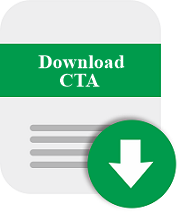The Cyclical Behavior of Capital Buffer of Indonesian Islamic and Conventional Banks
Abstract
This paper is aimed at analyzing the cyclical behavior of capital buffer of Islamic and conventional banks in Indonesia. More specifically, this paper has three objectives. First, to test whether capital buffer in Indonesian banking industry as a whole is countercyclical or procyclical. Second, to test whether there is a difference in the level of capital buffer of Islamic banks as compared to the level of capital buffer of conventional banks. Third, to test whether there is a difference in the cyclicality of capital buffer of Islamic and conventional banks. The analysis in this paper is conducted using the standard dynamic system generalized method of moments (system GMM) regressions and includes a panel of 108 banks over the period between 2004 and 2019. From the results, it can be concluded that the capital buffer of Islamic and conventional banks in Indonesia is procyclical. From the results, it can also be concluded that no difference exists in the level of capital buffer of Islamic banks as compared to conventional banks and in the cyclicality of capital buffer in Islamic and conventional banking. If the countercyclical capital buffer is achieved, a policy measure to alter the cyclical behavior of capital buffer of Islamic and conventional banks in Indonesia therefore is a must. Such policy measure needs not to be specified for Islamic or conventional banking industry.
Keywords
Full Text:
PDFReferences
Amato, J. D., & Furfine, C. H. (2004). Are credit ratings procyclical? Journal of Banking and Finance, 28(11), 2641–2677. https://doi.org/10.1016/j.jbankfin.2004.06.005
Arellano, M., & Bover, O. (1995). Another look at the instrumental variable estimation of error-components models. Journal of Econometrics. https://doi.org/10.1016/0304-4076(94)01642-D
Askari, H., Iqbal, Z., & Mirakhor, A. (2015). Introduction to Islamic Economics-Theoy anf Application. John Wiley & Sons Singapore Pte. Ltd.
Ayuso, J., Pérez, D., & Saurina, J. (2004). Are capital buffers pro-cyclical? Evidence from Spanish panel data. Journal of Financial Intermediation, 13(2), 249–264. https://doi.org/10.1016/S1042-9573(03)00044-5
BCSB. (2010). Basel III: A Global Regulatory Framework for More Resilient Banks and Banking Systems. Bank for International Settlement (BIS).
Bikker, J. A., & Metzemakers, P. A. J. (2005). Bank provisioning behaviour and procyclicality. Journal of International Financial Markets, Institutions and Money, 15(2), 141–157. https://doi.org/10.1016/j.intfin.2004.03.004
Blundell, R., & Bond, S. (1998). Initial conditions and moment restrictions in dynamic panel data models. Journal of Econometrics, 87(1), 115–143. https://doi.org/10.1016/S0304-4076(98)00009-8
Bougatef, K., & Korbi, F. (2018). Capital buffer and credit-risk adjustments in Islamic and conventional banks. Thunderbird International Business Review, 1–18. https://doi.org/10.1002/tie.22022
Carvallo, O., Kasman, A., & Kontbay-Busun, S. (2015). The Latin American bank capital buffers and business cycle: Are they pro-cyclical? Journal of International Financial Markets, Institutions and Money, 36(C), 148–160.
Chen, Y.-K., Ho, A. Y.-F., & Hsu, C.-L. (2014). Are bank capital buffers cyclical? Evidence of developed and developing countries. Journal of Financial Studies, 22(3), 27–55.
Coffinet, J., Coudert, V., Pop, A., & Pouvelle, C. (2012). Two-way interplays between capital buffers and credit growth: Evidence from French banks. Journal of International Financial Markets, Institutions and Money, 22(5), 1110–1125. https://doi.org/10.1016/j.intfin.2012.05.011
Daher, H., Masih, M., & Ibrahim, M. (2015). The unique risk exposures of Islamic banks’ capital buffers: A dynamic panel data analysis. Journal of International Financial Markets, Institutions and Money, 36, 36–52. https://doi.org/10.1016/j.intfin.2015.02.012
de Carvalho, F. A., & de Castro, M. R. (2015). Macroprudential and Monetary Policy Interaction: a Brazilian perspective. In Banco Central do Brasil.
De Mooij, R. A. (2011). Tax Biases to Debt Finance: Assessing the Problem, Finding Solutions. Fiscal Studies, 33(4), 489–512. https://doi.org/10.1111/j.1475-5890.2012.00170.x
Deriantino, E. (2011). Procyclicality of banks’ capital buffer and its impact on bank’s lending activity in ASEAN countries. In Working Paper. https://doi.org/10.2139/ssrn.1894488
El-Gamal, M. A., & Inanoglu, H. (2005). Inefficiency and heterogeneity in Turkish banking: 1990–2000. Journal of Applied Econometrics, 20(5), 641–664. https://doi.org/https://doi.org/10.1002/jae.835
Guidara, A., Lai, V. S., Soumaré, I., & Tchana, F. T. (2013). Banks’ capital buffer, risk and performance in the Canadian banking system: Impact of business cycles and regulatory changes. Journal of Banking and Finance, 37(9), 3373–3387. https://doi.org/10.1016/j.jbankfin.2013.05.012
Habib, S. F. (2018). Fundamentals of Islamic Finance and Banking. John Wiley & Sons.
Hansen, L. P. (1982). Large sample properties of generalized method of moments estimators. Econometrica, 50(4), 1029–1054. https://doi.org/doi:10.2307/1912775
Hassan, T., Mohamad, S., & Khaled I. Bader, M. (2009). Efficiency of conventional versus Islamic banks: evidence from the Middle East. International Journal of Islamic and Middle Eastern Finance and Management, 2(1), 46–65. https://doi.org/10.1108/17538390910946267
Huang, X., & Xiong, Q. (2015). Bank capital buffer decisions under macroeconomic fluctuations: Evidence for the banking industry of China. International Review of Economics and Finance, 36(12), 30–39. https://doi.org/10.1016/j.iref.2014.11.005
Jiang, C., Liu, H., & Molyneux, P. (2019). Do different forms of government ownership matter for bank capital behavior? Evidence from China. Journal of Financial Stability, 40, 38–49. https://doi.org/https://doi.org/10.1016/j.jfs.2018.11.005
Jokipii, T., & Milne, A. (2008). The cyclical behaviour of European bank capital buffers. Journal of Banking and Finance, 32(8), 1440–1451. https://doi.org/10.1016/j.jbankfin.2007.12.001
Kane, E. J. (1989). Changing incentives facing financial-services regulators. Journal of Financial Services Research, 2(3), 265–274. https://doi.org/10.1007/BF00130743
Kasri, R. A., & Azzahra, C. (2020). Do Islamic banks more stable than conventional banks? Evidence from Indonesia. Jurnal Ekonomi & Keuangan Islam, 6(2 SE-Articles), 149–164. https://doi.org/10.20885/jeki.vol6.iss2.art6
Khan, F. (2010). How “Islamic” is Islamic Banking? Journal of Economic Behavior and Organization, 76(3), 805–820. https://doi.org/10.1016/j.jebo.2010.09.015
Klein, P., Maidl, C., & Woyand, C. (2021). Bank ownership and capital buffers: How internal control is affected by external governance. Journal of Financial Stability, 54, 100857. https://doi.org/https://doi.org/10.1016/j.jfs.2021.100857
Lindquist, K. G. (2004). Banks’ buffer capital: How important is risk. Journal of International Money and Finance, 23(3), 493–513. https://doi.org/10.1016/j.jimonfin.2004.01.006
Maatoug, A. Ben, Ayed, B. W., & Zied, F. (2019). Are MENA banks’ capital buffers countercyclical? Evidence from the Islamic and conventional banking systems. Quarterly Review of Economics and Finance, 74, 109–118. https://doi.org/10.1016/j.qref.2019.04.006
Maharani, N. K., & Setiyono, B. (2018). Do Risk, Business Cycle, and Competition Affect Capital Buffer? an Empirical Study on Islamic Banking in Asean and Mena. In Journal of Islamic Monetary Economics and Finance (Vol. 3, Issue 2). https://doi.org/10.21098/jimf.v3i2.888
Marcucci, J., & Quagliariello, M. (2008). Is bank portfolio riskiness procyclical? Evidence from Italy using a vector autoregression. Journal of International Financial Markets, Institutions and Money, 18(1), 46–63. https://doi.org/10.1016/j.intfin.2006.05.002
Prasetyantoko, A., & Soedarmono, W. (2010). The determinants of capital buffer in Indonesian banking. Financial Stability Review, Forthcomin.
Shim, J. (2013). Bank capital buffer and portfolio risk: The influence of business cycle and revenue diversification. Journal of Banking and Finance, 37(3), 761–772. https://doi.org/10.1016/j.jbankfin.2012.10.002
Stolz, S., & Wedow, M. (2011). Banks’ regulatory capital buffer and the business cycle: Evidence for Germany. Journal of Financial Stability, 7(2), 98–110. https://doi.org/10.1016/j.jfs.2009.09.001
Susamto, A. A., Octavio, D. Q., & Wardani, D. T. K. (2021). Benchmarking the intermediation costs of Islamic and conventional banks : Evidence from Indonesia. Journal of Economic Cooperation and Development, 42(3), 91–118.
DOI: https://doi.org/10.18196/ijief.v6i1.13154
Refbacks
- There are currently no refbacks.
Copyright (c) 2023 International Journal of Islamic Economics and Finance (IJIEF)

This work is licensed under a Creative Commons Attribution-ShareAlike 4.0 International License.
International Journal of Islamic Economics and Finance (IJIEF)
International Program for Islamic Economics and Finance
Department of Economics
Faculty of Economics and Business
Universitas Muhammadiyah Yogyakarta
Pascasarjana Building, Ground Floor
Jl. Brawijaya (Ringroad Selatan), Kasihan, Bantul
D.I. Yogyakarta 55183, INDONESIA
Official email: ijief@umy.ac.id












1.jpg)